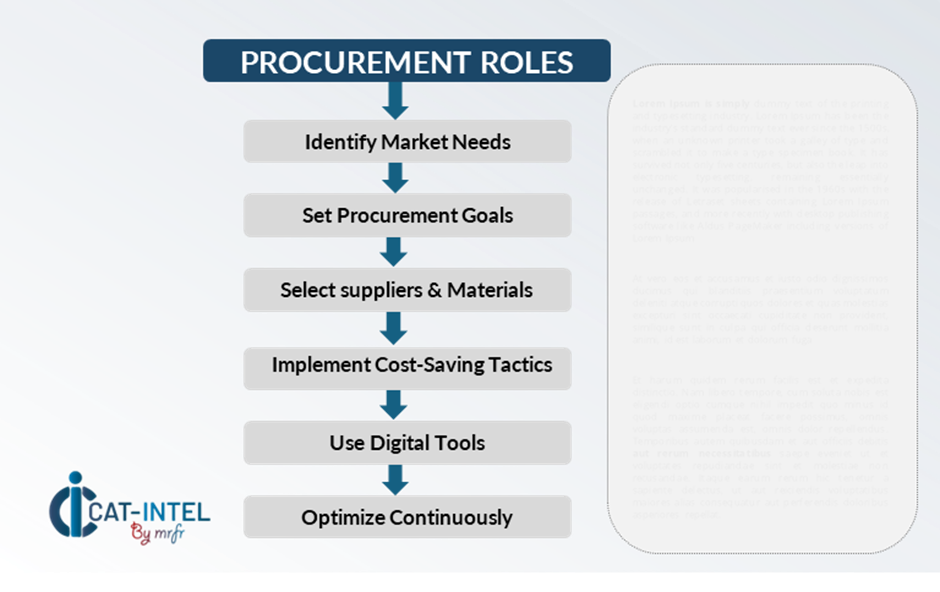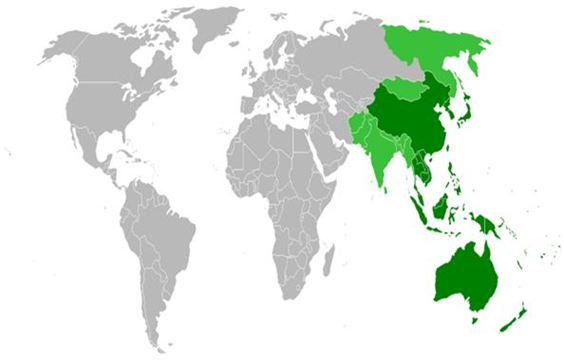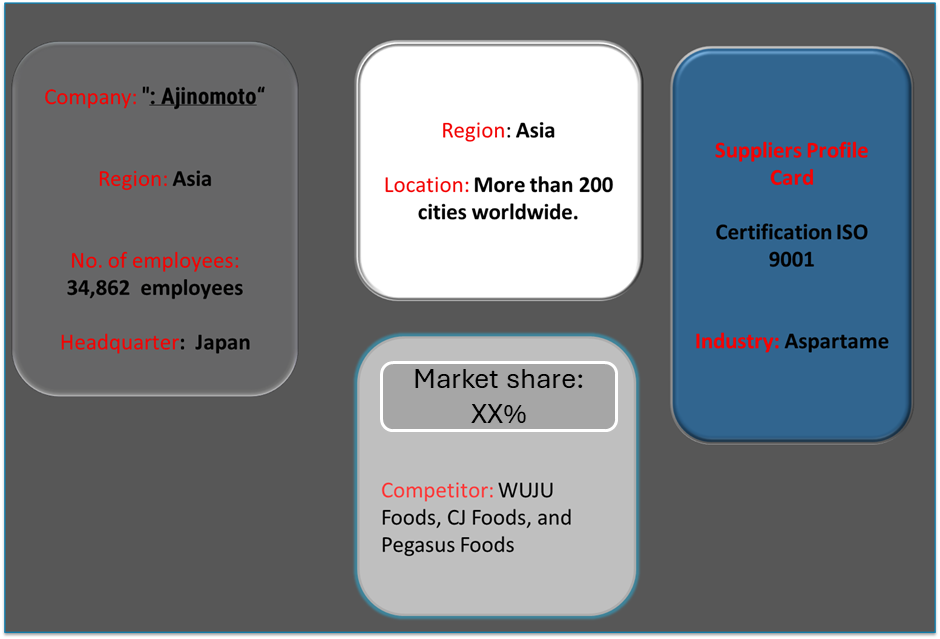Summary Overview
Fruits Market Overview:
The global fruit market is steadily expanding, driven by rising demand in areas such as retail, foodservice, healthcare, and logistics. This market includes a diverse range of fruit categories, such as fresh, frozen, organic, and processed items. Our research includes a thorough examination of procurement trends, emphasizing cost-cutting measures and the use of digital tools to streamline procurement and operations.
Key future issues in fruit procurement include cost management, constant product quality, supply chain resilience, and incorporating modern technologies to improve distribution networks. Digital procurement technologies and strategic sourcing approaches are critical for improving fruit sourcing and maintaining long-term market competitiveness. As global demand continues to climb, businesses are using market intelligence to improve operational efficiency, reduce risks, and stay ahead in an increasingly competitive market.
Market Size: The global Fruits market is projected to reach USD 1171.2 billion by 2035, growing at a CAGR of approximately 1.32% from 2025 to 2035.

Growth Rate: 1.32%
Sector Contributions: Growth in the market is driven by:
-
Supply Chain & Distribution Optimization: There is a growing need for real-time data and process integration to improve fruit procurement, transportation, and storage efficiency.
-
Retail and E-Commerce Growth: Improved inventory management, demand forecasting, and CRM to drive retail and e-commerce growth in the fruit sector
-
Technological Transformation: Advances in artificial intelligence and machine learning improve supply chain operations, allowing for predictive analytics of demand trends and logistics automation
-
Innovations: Modular systems enable businesses to pick and integrate only the features they require, increasing cost efficiency and simplifying fruit procurement and distribution.
-
Investment Initiatives: Companies are investing in cloud-based technologies to minimize infrastructure costs, improve supply chain visibility, and provide remote access to fruit suppliers and merchants.
-
Regional Insights: Asia Pacific and North America continue to be key contributors to the global fruit industry, thanks to strong digital infrastructure and the increased adoption of digital distribution and sales solutions.
Key Trends and Sustainability Outlook:
-
Cloud Integration: Cloud technologies are being adopted more widely for scalability, cost efficiency, and increased access to market data, allowing for better fruit industry decision-making.
-
Advanced Features: Integration of AI, IoT, and blockchain technologies to improve sourcing transparency, automate traceability, and maintain fruit supply chain quality.
-
Sustainability Focus: Advanced tools allow for more efficient resource management, assisting fruit suppliers in tracking environmental impact and meeting sustainability targets.
-
Customization Trends: There is an increasing demand for industry-specific solutions that address the fruit sector's unique needs, such as logistics, perishability, and food safety compliance.
-
Data-Driven Insights: Advanced analytics enable businesses to better estimate demand, optimize inventory levels, and measure performance metrics for effective fruit distribution.
Growth Drivers:
-
Digital Transformation: The fruit business is increasingly adopting digital solutions to boost production, traceability, and operational efficiency.
-
Demand for Process Automation: There is an increasing dependence on technology to automate repetitive processes such as inventory management, minimizing operational bottlenecks in the fruit supply chain.
-
Scalability Requirements: Fruit suppliers want flexible systems that can scale with their operations, providing seamless expansion and integration with partners in worldwide marketplaces.
-
Regulatory Compliance: Tools to assist firms comply with food safety rules, automate reporting, and assure data accuracy are becoming increasingly important in the fruit industry.
-
Globalization: Growing demand for technologies that accommodate several currencies, languages, and global compliance requirements in the global fruit trade.
Overview of Market Intelligence Services for the Fruits Market:
Recent investigations have found major difficulties in the fruit sector, including high sourcing prices and the need for supply chain optimization. Market intelligence studies offer significant insights into procurement opportunities, assisting businesses in identifying cost-saving initiatives, optimizing supplier relationships, and ensuring efficient operating procedures. These insights also help to comply with industry requirements and maintain product quality while successfully managing costs across the supply chain.
Procurement Intelligence for Fruits: Category Management and Strategic Sourcing
To remain competitive in the global fruit market, businesses are improving their procurement operations by evaluating spending trends and monitoring supplier performance. Effective category management and strategic sourcing are critical for lowering procurement costs while maintaining a regular supply of high-quality fruit. Businesses can use actionable market intelligence to optimize their procurement strategy, acquire advantageous supplier terms, and maintain a dependable, cost-effective supply network for fresh and processed fruit products.

Pricing Outlook for Fruits: Spend Analysis
The fruit market pricing outlook is projected to remain moderately dynamic, with probable variations caused by a variety of variables. Technological developments, increased demand for sustainable sourcing techniques, seasonal fluctuations in crop yields, and regional price variances are all important drivers. Furthermore, the growing use of AI and IoT in supply chain management, along with a greater emphasis on food safety and traceability, is placing upward pressure on fruit prices.

Graph shows general upward trend pricing for Fruits and growing demand. However, there may be fluctuations influenced by economic conditions, technological advancements, and competitive dynamic.
Efforts to optimize procurement procedures, improve vendor management, and implement more flexible sourcing models are critical for cost control. Using digital tools for market monitoring, price forecasting via analytics, and effective contract management can dramatically reduce costs in fruit sourcing and distribution.
Partnering with reputable fruit suppliers, negotiating long-term contracts, and investigating subscription-based pricing structures for consistent supply are all useful techniques for controlling fruit procurement costs. Regardless of these obstacles, concentrating on scalability, guaranteeing efficient supply chain management, and implementing sustainable sourcing techniques will be critical to sustaining cost-effectiveness and operational excellence in the fruit business.
Cost Breakdown for Fruits: Total Cost of Ownership (TCO) and Cost-Saving Opportunities Procurement and Sourcing: (40%)
Procurement and Sourcing: (40%)-
Description: This category includes the costs of sourcing the fruits, such as purchasing prices from suppliers, transportation fees, import charges, and shipping costs.
-
Trend: Direct trade agreements with farmers and producers are gaining traction to decrease intermediaries’ expenses, leading to more supply chain transparency.
Cost-Saving Opportunities: Negotiation Levers and Purchasing Negotiation Strategies
In the fruit sector, streamlining procurement processes and using strategic bargaining strategies can result in significant cost savings and improved operational efficiency. Long-term relationships with dependable fruit suppliers, particularly those that offer sustainable sourcing procedures or new distribution models, might result in improved pricing structures and more advantageous terms, such as volume-based discounts and bundled service packages. Subscription-based approaches and multi-year contracts provide chances to negotiate reduced rates while mitigating price rises over time
Collaborating with suppliers who value innovation and scalability provides additional benefits, such as access to advanced analytics for demand forecasting, AI integration for supply chain management, and flexible sourcing alternatives, all of which assist lower long-term operational expenses. Implementing digital procurement tools like contract management systems and usage analytics improves transparency, reduces overordering, and maximizes inventory utilization.
Supply and Demand Overview for Fruits: Demand-Supply Dynamics and Buyer Intelligence for Effective Supplier Relationship Management (SRM)
The fruit market is expanding steadily, driven by rising demand for effective supply chain management, sustainability initiatives, and a shift toward digital technology in sourcing and distribution. Technological improvements, regional sourcing needs, and global economic situations all have an impact on supply and demand dynamics.
Demand Factors:
-
Sustainability Initiatives: The increased emphasis on ecologically friendly methods and sustainable sourcing is creating a demand for creative and verifiable fruit procurement solutions.
-
Technology Adoption: As the fruit industry shifts to digital tools for supply chain visibility, inventory management, and demand forecasting, there is an increase in demand for technologically enabled solutions.
-
Seasonal and Regional Requirements: Different areas and fruit kinds have unique sourcing and supply chain requirements, creating a necessity for industry-tailored solutions and local sourcing relationships.
-
Integration Capabilities: The growing desire for solutions that interact smoothly with existing corporate software, such as point-of-sale systems or supply chain management tools, is driving the expansion of digital solutions in the fruit sector.
Supply Factors:
-
Technological Advancements: AI, machine learning, and data analytics are enhancing the ability to predict demand, manage supply chains, and decrease waste in the fruit business, thereby increasing provider competitiveness.
-
Vendor Ecosystem: A growing number of technology and logistics providers, ranging from local suppliers to large-scale international corporations, are offering solutions for the fruit market, providing buyers with a variety of options.
-
Global Economic Factors: Currency fluctuations, regional labour costs, and changes in international trade policies all have an impact on fruit prices, availability, and sourcing tactics.
-
Scalability and Flexibility: The capacity to scale fruit procurement and distribution solutions to satisfy the diverse needs of businesses, ranging from small local farmers to major multinational distributors, is essential.
Regional Demand-Supply Outlook: Fruits

The Image shows growing demand for Fruits in both Asia Pacific and North America, with potential price increases and increased Competition.
Asia Pacific: Dominance in the Fruits Market
Asia Pacific, particularly China, is a dominant force in the global Fruits market due to several key factors:
-
Diverse environment Conditions: The region's diverse environment, ranging from tropical to temperate, enables the production of a wide range of fruits, including exotic varieties in high demand around the world.
-
Large Consumer Base: Rapid urbanization and a growing emphasis on health and wellbeing have increased demand for fresh and nutritious foods, such as fruits.
-
Export Hub for Global Markets: With well-established supply chains and efficient distribution networks, the region can efficiently service both domestic and foreign markets.
-
Increasing Adoption in Agriculture: The Asia-Pacific area has experienced considerable developments in agricultural technologies, such as improved farming practices, irrigation systems, and cold-chain logistics.
-
Demand for Exotic and Tropical Fruits: As global tastes change, there is a growing appetite for exotic and tropical fruits, which are native to Asia-Pacific.

Asia Pacific Remains a key Fruits Price Drivers Innovation and Growth.
Supplier Landscape: Supplier Negotiations and Strategies
The supplier landscape in the fruit market is diversified and competitive, with a mix of global and regional firms influencing industry dynamics. These vendors have a significant impact on price structures, sourcing procedures, product quality, and sustainability activities. Large, established suppliers dominate the market, offering a diverse range of fruits, whilst smaller, specialized providers focus on specialty fruits, organic products, or specific regional sourcing.
The fruit supplier ecosystem encompasses significant agricultural regions, including both well-known global distributors and innovative local producers who cater to specific market demands, such as organic or locally sourced products. As customers prioritize sustainability, traceability, and freshness, fruit suppliers are improving their technology, using data analytics for demand forecasting, and providing flexible sourcing methods to suit changing business and consumer demands. Furthermore, the use of digital platforms for real-time supply chain monitoring and market insights is increasing, allowing suppliers to increase efficiency and satisfy customer expectations.
Key Suppliers in the Fruits Market Include:
- Olam International
- Dole Food Company, Inc.
- Chiquita Brands International, Ltd.
- Fresh Del Monte Produce Inc.
- The Greenyard Group
- Sunkist Growers, Inc.
- Zespri International Ltd.
- Costa Group
- Baywa AG
- Cargill, Inc.

Key Developments Procurement Category Significant Development:
Significant Development |
Description |
Market Growth |
The fruit market is expanding rapidly, driven by rising consumer demand for fresh, organic, and sustainably sourced produce, especially in emerging nations where access to contemporary distribution systems is improving. |
Cloud Adoption |
The fruit business is also experiencing a major movement toward cloud-based solutions. Cloud systems provide scalability, cost-efficiency, and enhanced accessibility, especially for enterprises that want to simplify operations across several areas. |
Product Innovation |
Fruit suppliers and distributors are adopting digital advances to improve their offers. Industry-specific solutions for managing perishability, freshness, and traceability are gaining traction among suppliers. |
Technological Advancements |
Technological developments, such as machine learning and Internet of Things (IoT) integration, are boosting the capabilities of fruit supply chains. They also help with estimating crop harvests and optimizing distribution routes to prevent waste and inefficiencies.
|
Global Trade Dynamics |
Multinational corporations with complicated supply chains are increasingly using digital solutions to comply with international food safety, sustainability, and trade requirements. |
Customization Trends |
Suppliers are increasingly choosing adaptable, modular solutions that may be tailored to address specific difficulties such as seasonality, local sourcing constraints, and perishable items. |
Fruits Attribute/Metric |
Details |
Market Sizing |
The global Fruits market is projected to reach USD 1171.2 billion by 2035, growing at a CAGR of approximately 1.32% from 2025 to 2035. |
Fruits Technology Adoption Rate |
Approximately 60% of fruit distributors and suppliers worldwide have implemented digital solutions, with a growing preference for cloud-based platforms to improve inventory management, logistics, and traceability. |
Top Fruits Industry Strategies for 2025 |
Key strategies include adopting AI-powered demand forecasting, streamlining supply chain operations with modular and scalable tools, and establishing sustainability tracking systems. |
Fruits Process Automation |
To improve operational efficiency and decrease human error, almost 50% of fruit supply chains use automation solutions for regular tasks such as order processing, inventory tracking, and shipment scheduling.
|
Fruits Process Challenges |
Key issues include managing perishable items, dealing with seasonal demand fluctuations, maintaining quality control, and adhering to regional food safety and environmental norms. |
Key Suppliers |
Leading providers in the fruit sector include global wholesalers such as Olam International, Dole Food Company, and Chiquita, as well as regional growers and niche organic suppliers. |
Key Regions Covered |
Asia Pacific, North America, Europe, are key regions for fruit industry growth, with significant demand from both developed and emerging markets (for fresh produce and processed fruit). |
Market Drivers and Trends |
Rising health consciousness, increased adoption of sustainable sourcing practices, technological advancements in logistics and inventory management, and a growing customer preference for organic and locally sourced fruits all contribute to growth.
|

